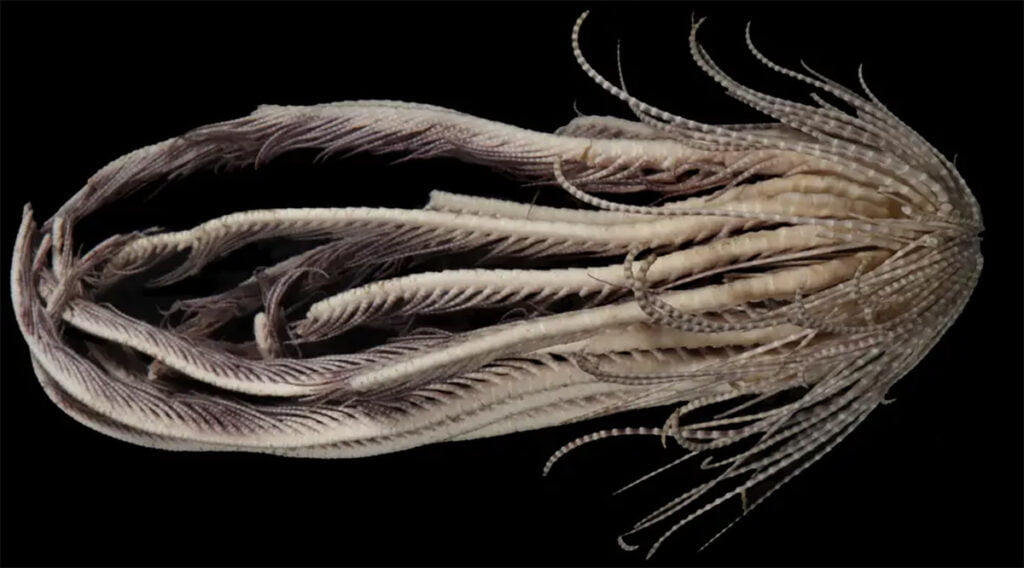
Unveiling the Intriguing Antarctic Sea creature with 20 arms: A New Species Defying Conventional Marine Life, Explored by Scientists
A new Mystery of Antarctica has been unveiled, it is an Antarctic Sea creature with 20 arms. A group of researchers hailing from Australia and the United States has unveiled an intriguing discovery: a previously unknown marine species inhabiting the Antarctic Ocean. This finding emerged from a series of meticulous research expeditions conducted near the icy expanse of Antarctica. These scientists embarked on a mission to explore the enigmatic underwater realm, specifically targeting a group of elusive sea creatures referred to as Promachocrinus species, or Antarctic feather stars, renowned for their peculiar and almost alien-like movements.
Through extensive sampling efforts across various regions including the Siple Coast, Diego Ramirez, and Prince Edward Islands, the researchers identified a total of seven novel species within the Promachocrinus category. This revelation substantially increased the count of recognized Antarctic feather species from a mere one to an impressive eight.
Of particular interest among these newfound species is one that has been christened the “Antarctic strawberry feather star.” This title was bestowed due to the striking resemblance of its body shape to that of a strawberry.

A new Mystery of Antarctica has been unveiled, it is an Antarctic Sea creature with 20 arms
Officially named Promachocrinus fragarius, the species derives its specific epithet, “fragarius,” from the Latin word for strawberry, “fragum,” as noted in the study.
The Antarctic strawberry feather star exhibits a habitat range spanning depths of 65 to 1,170 meters beneath the ocean’s surface. Its coloration can encompass shades ranging from purplish hues to dark reddish tones, as detailed in the research.
While the initial impression of the Antarctic strawberry feather star might evoke thoughts of an extraterrestrial entity, a closer examination of images showcasing this marine creature unveils its distinct strawberry-like shape and texture, captivating observers.
In the study, the researchers emphasize that identifying previously undiscovered species from the depths of Antarctica can prove to be a more protracted process than usual. They attribute this prolonged duration to the challenges posed by the limited scale of sampling necessary to uncover such cryptic taxa, or unknown species.
The study underscores the significance of discerning between truly cryptic taxa, recognizable solely through molecular data, and pseudocryptic taxa, which can be identified once their characteristics are reevaluated within a molecular framework. The researchers stress that accurate taxonomic identification is vital for effective biodiversity monitoring, even though complexities arise when dealing with genuinely cryptic taxa.
While some species within the Promachocrinus group can be determined based on their morphology—the scientific exploration of animal and plant structure—ambiguities persist regarding certain species. This finding highlights the ongoing nature of scientific inquiry and the perpetual quest to comprehend the intricacies of Earth’s diverse life forms.
